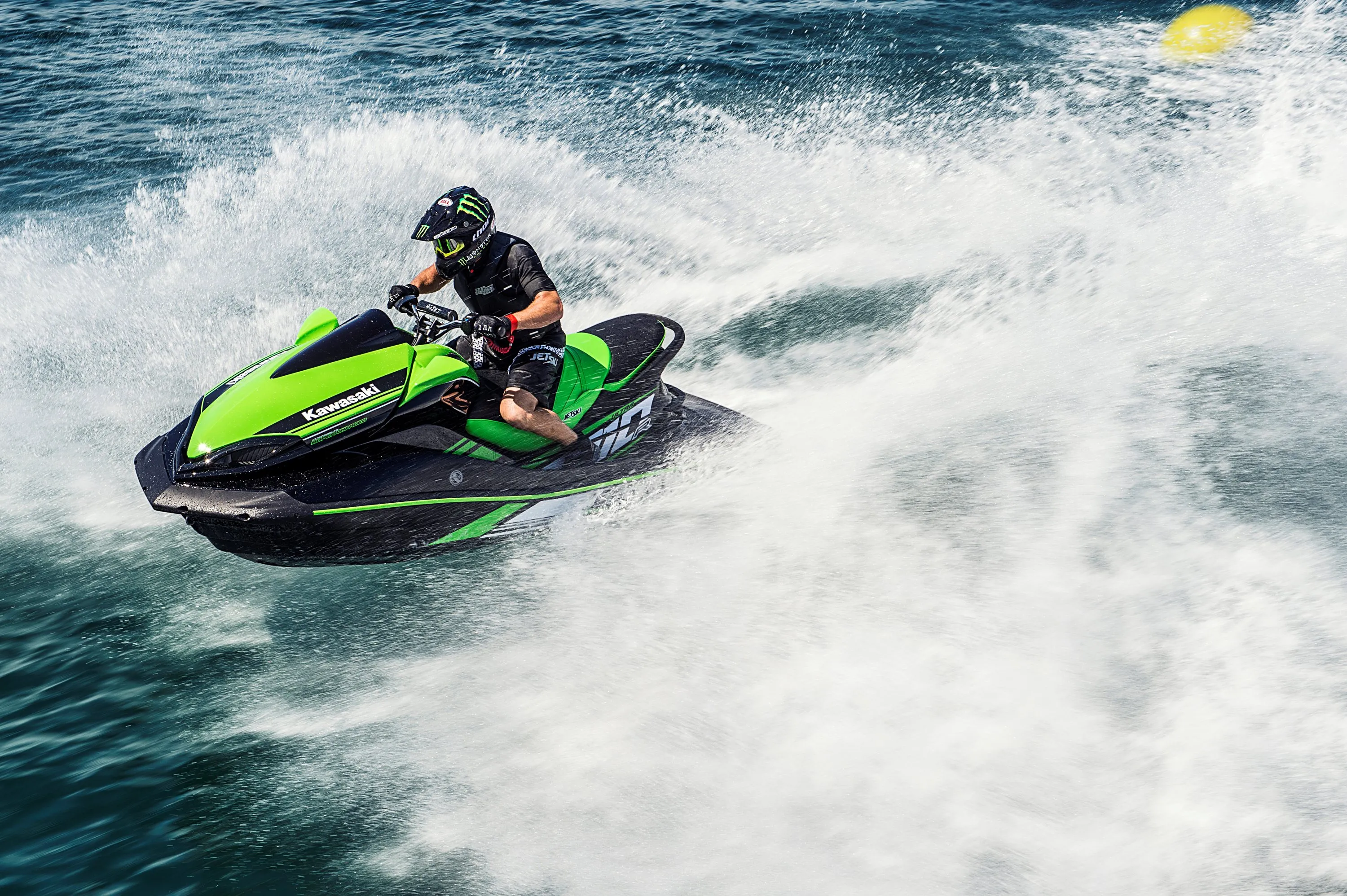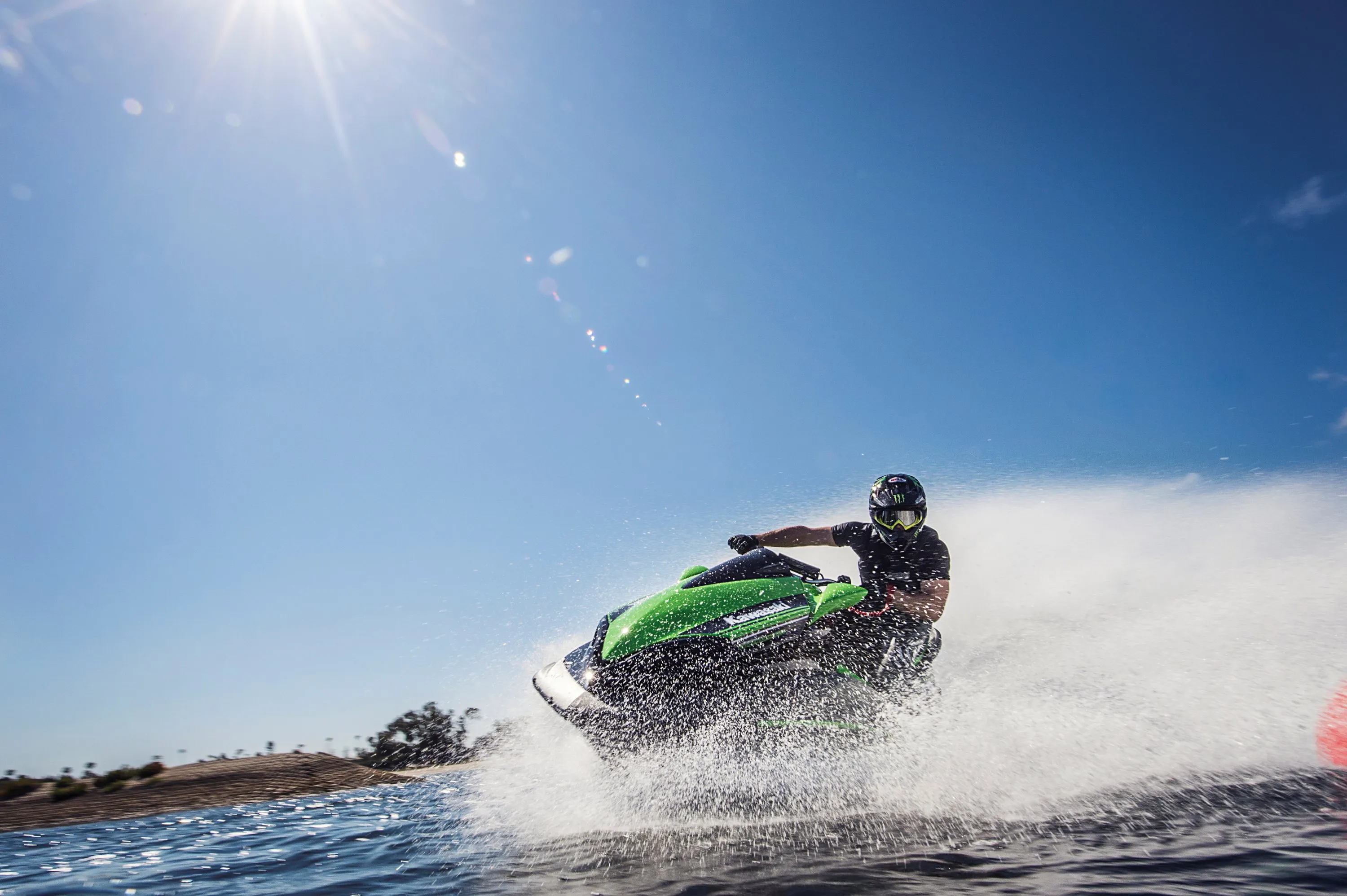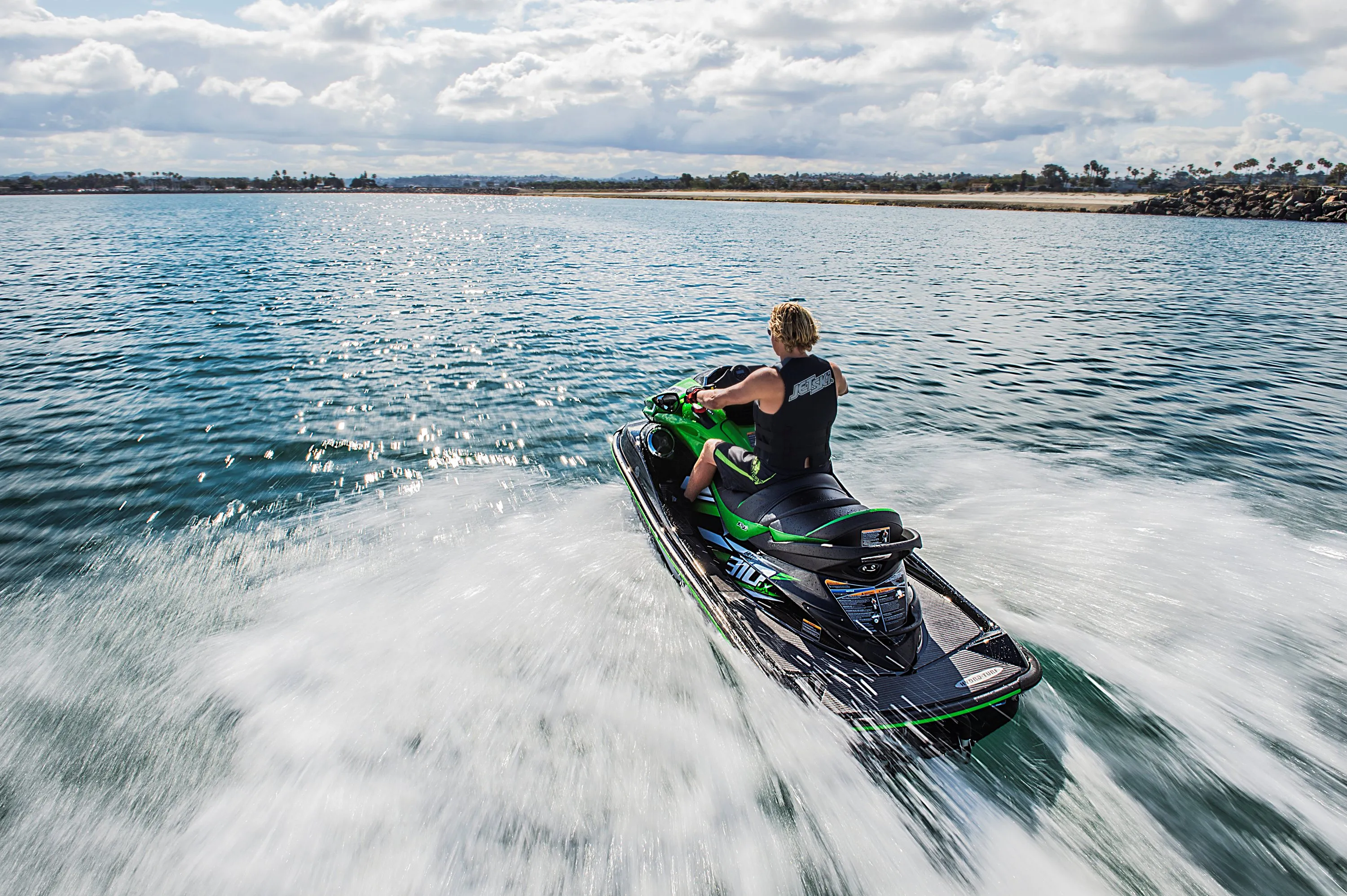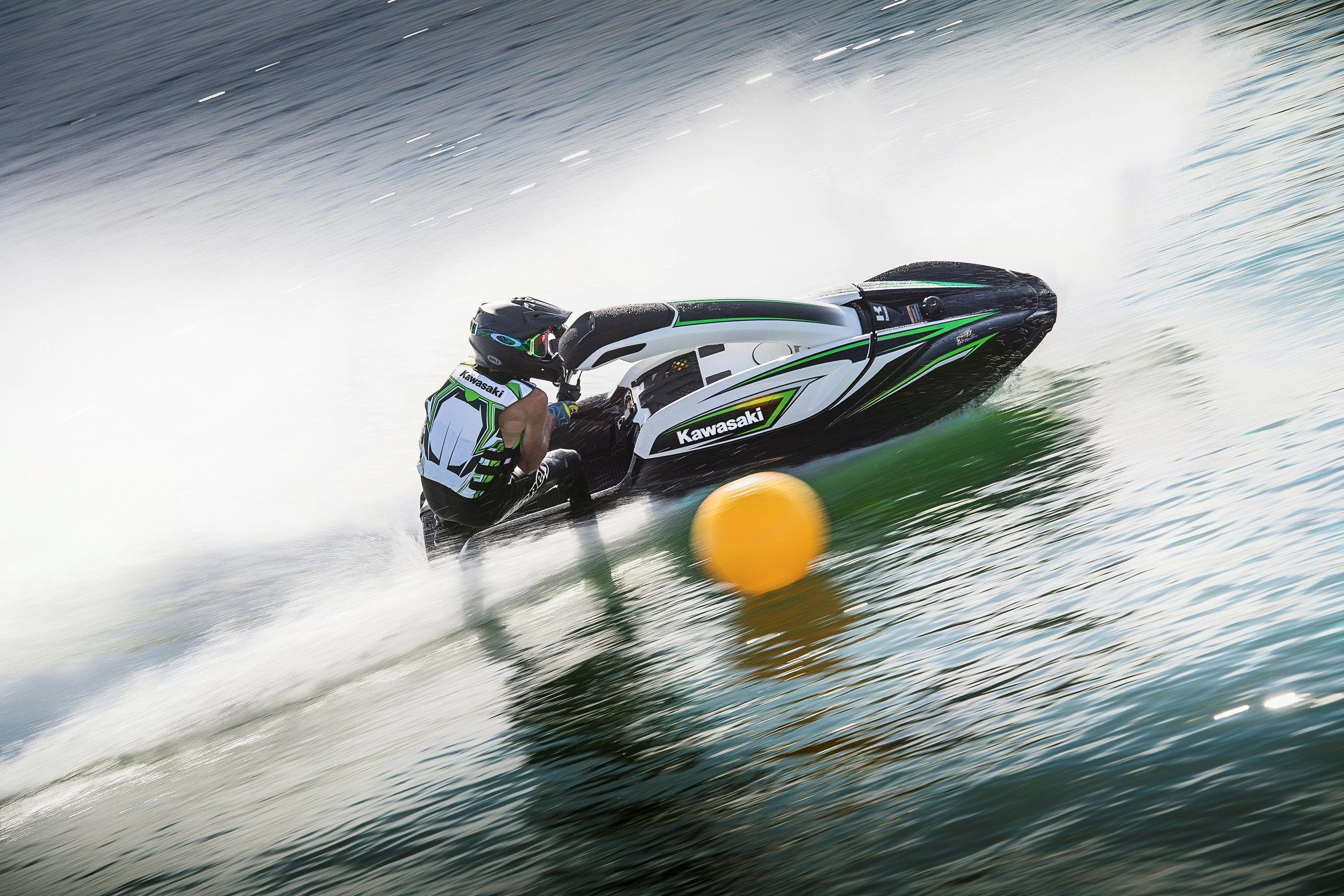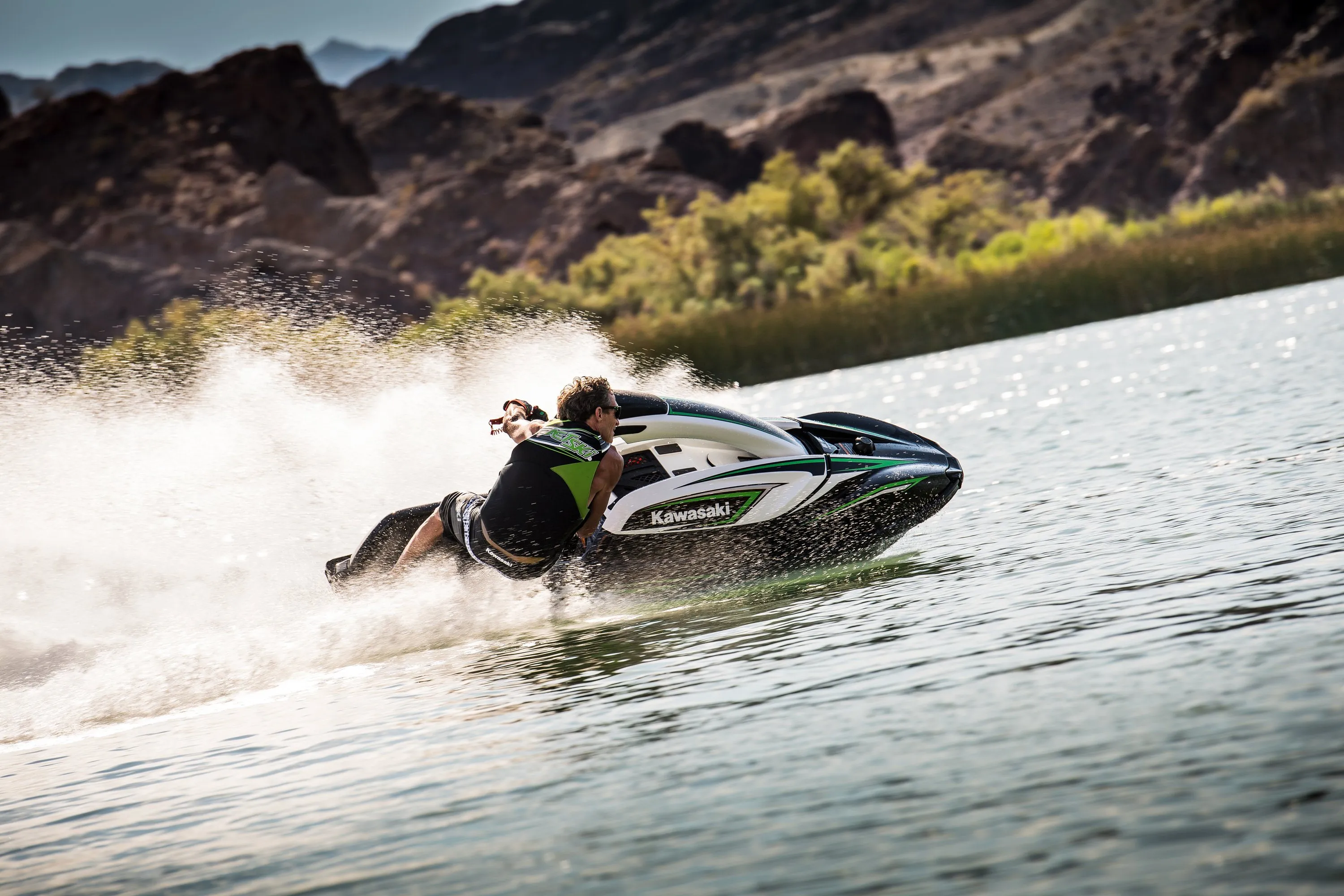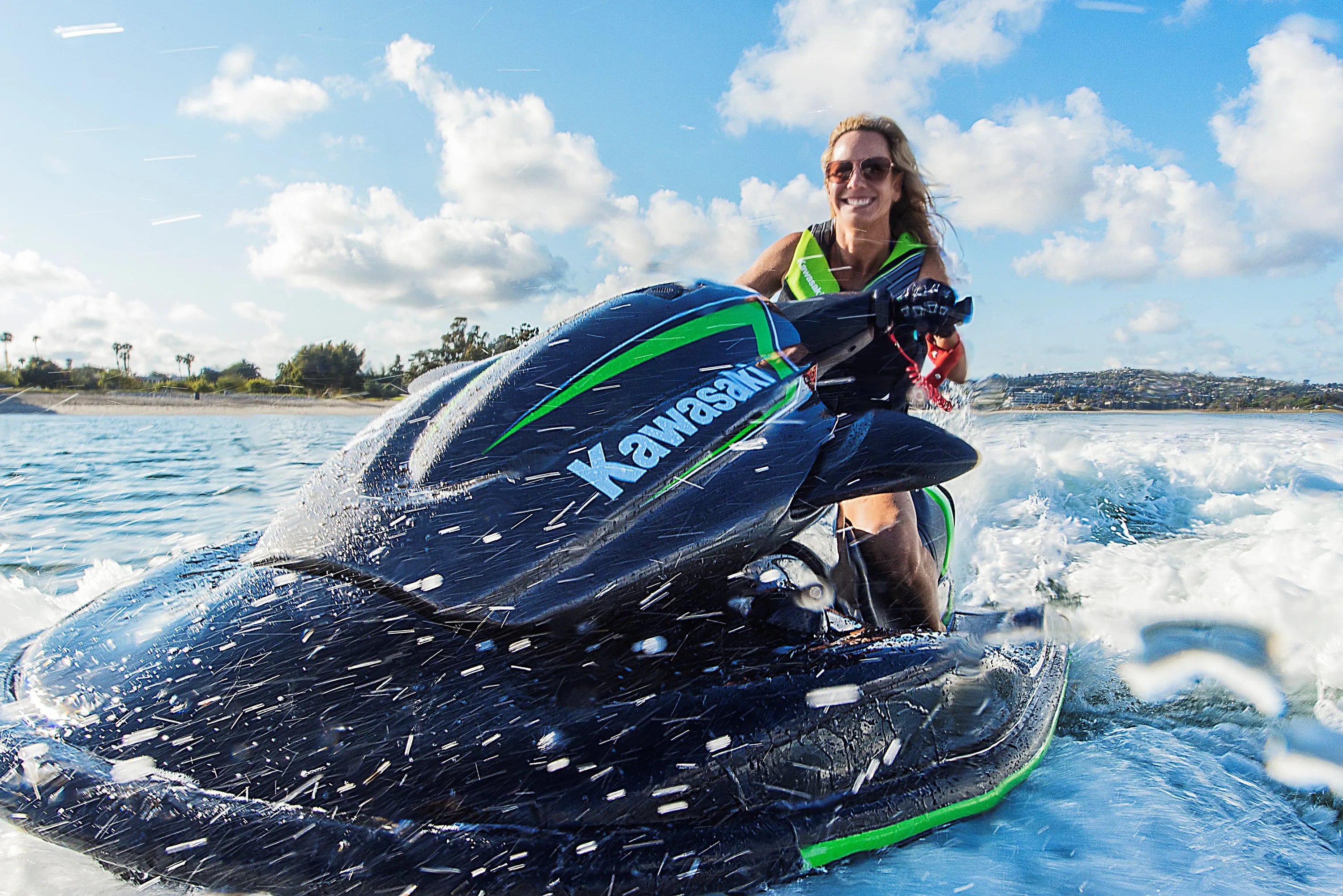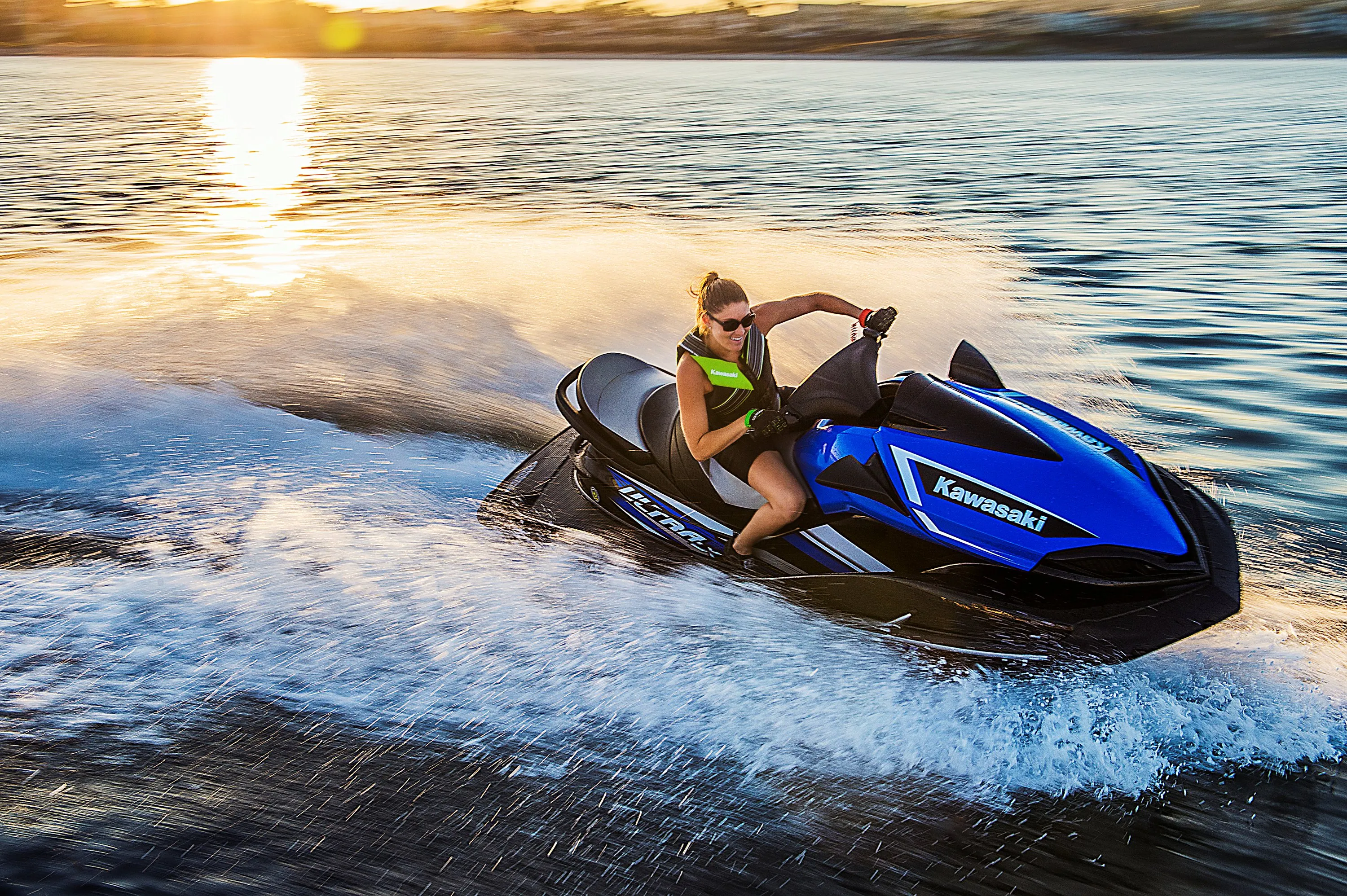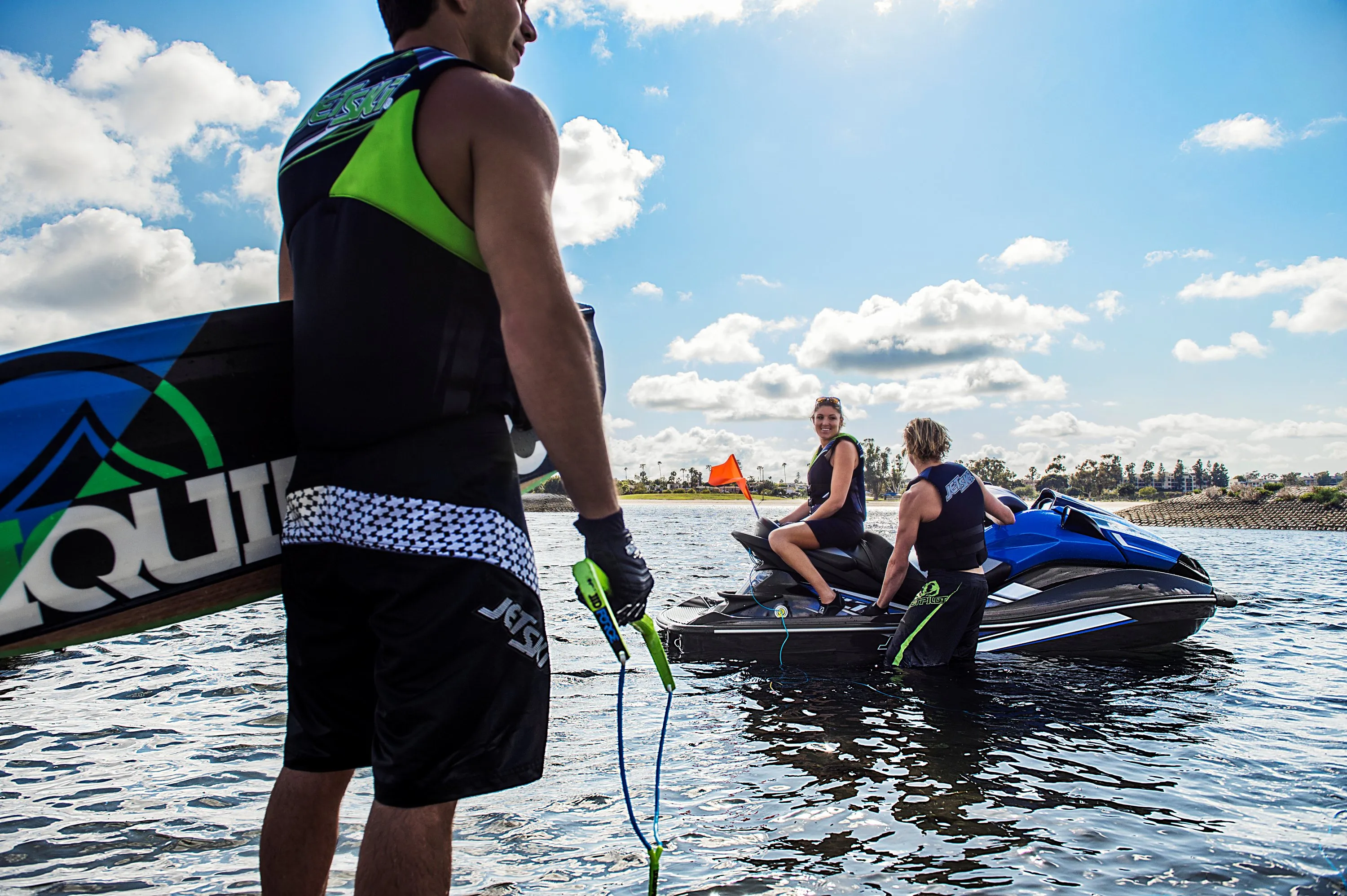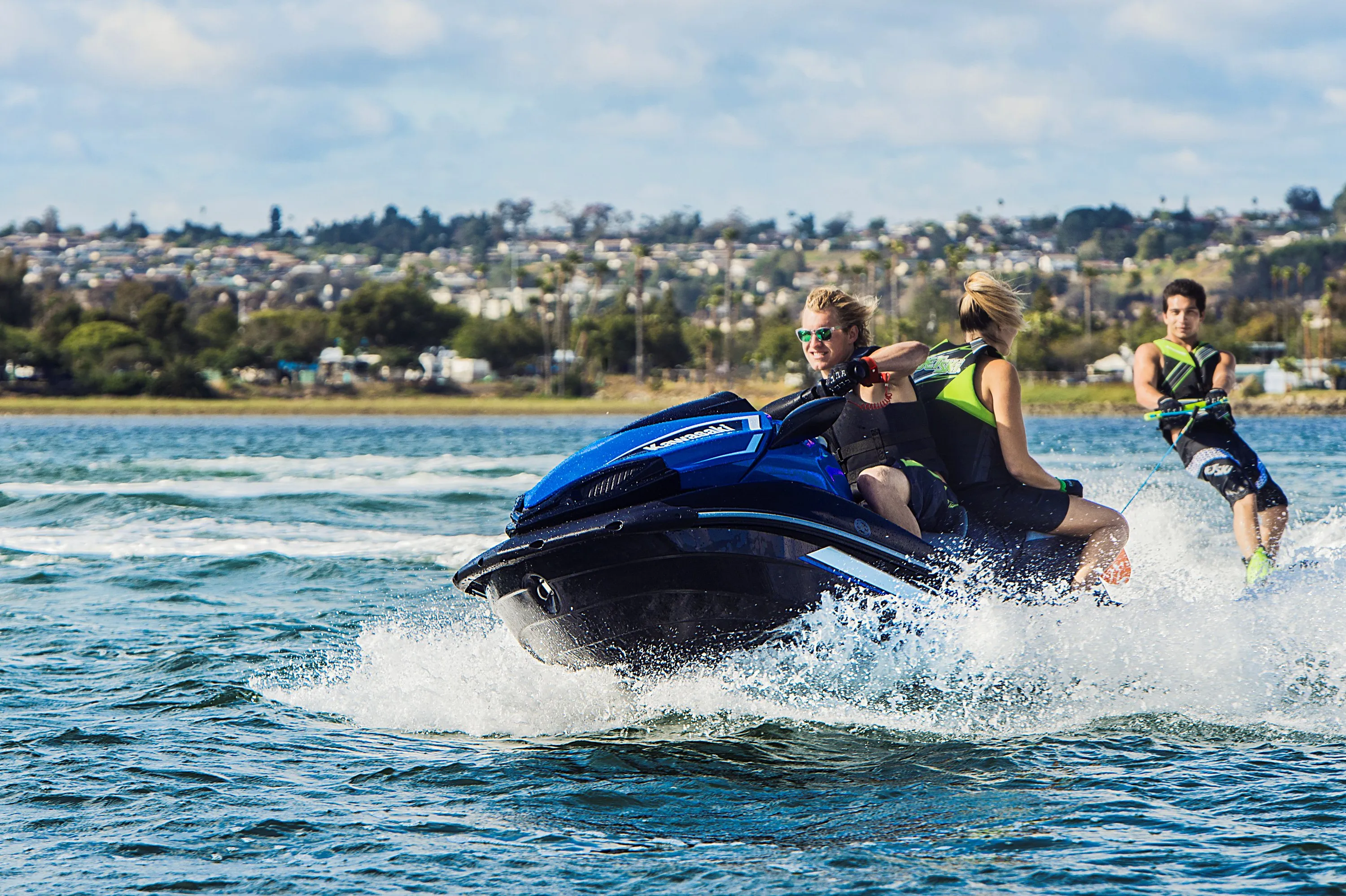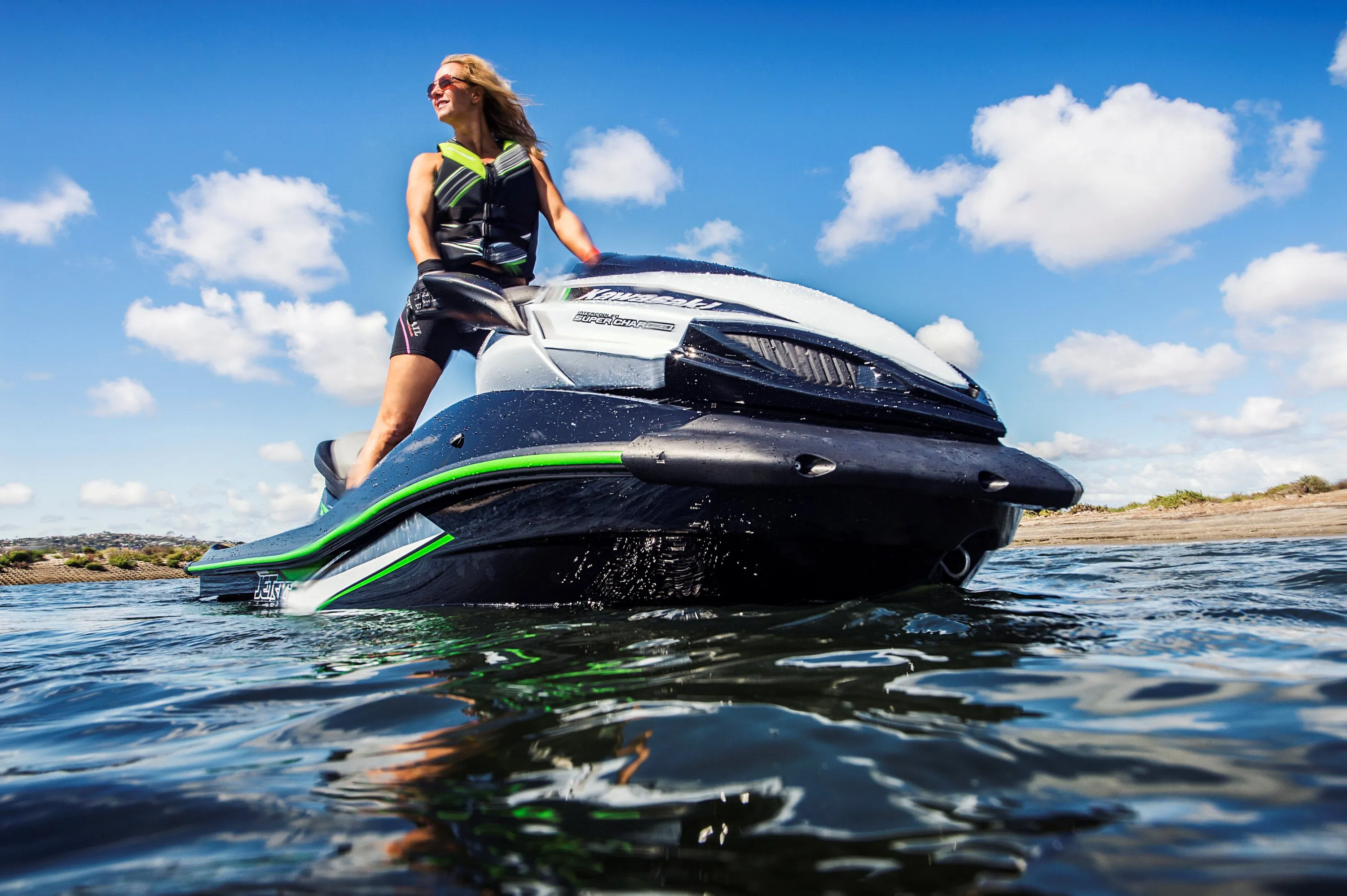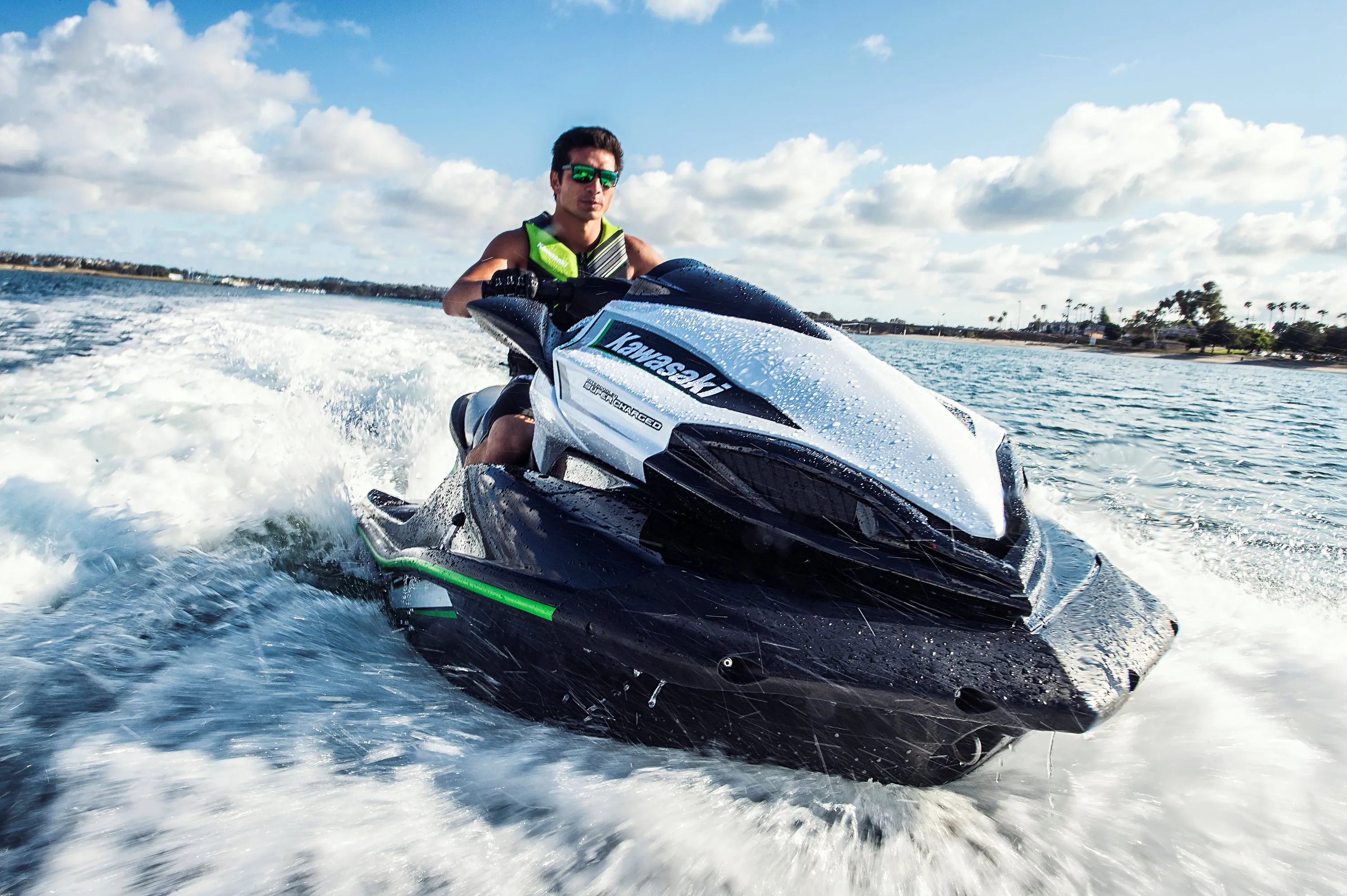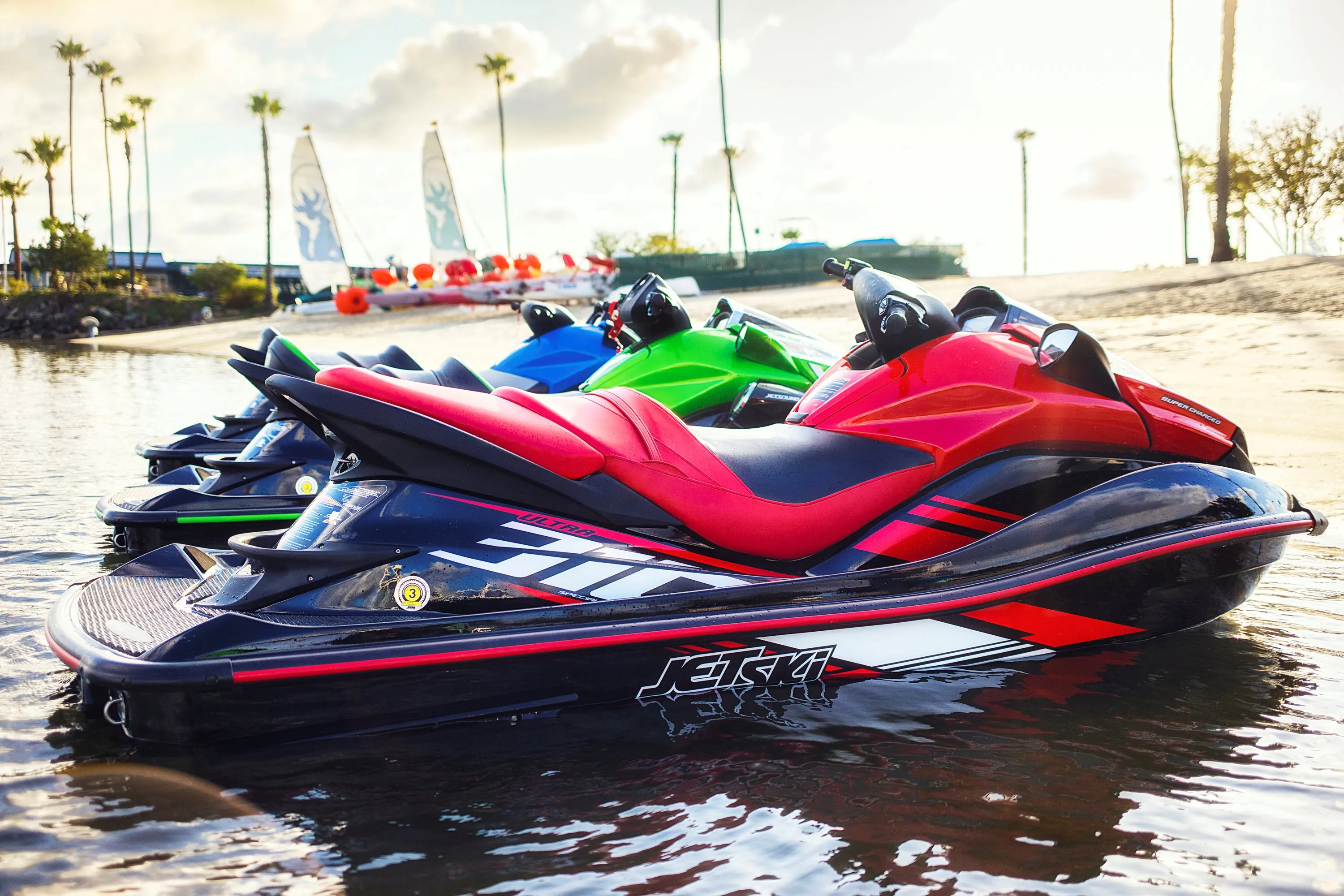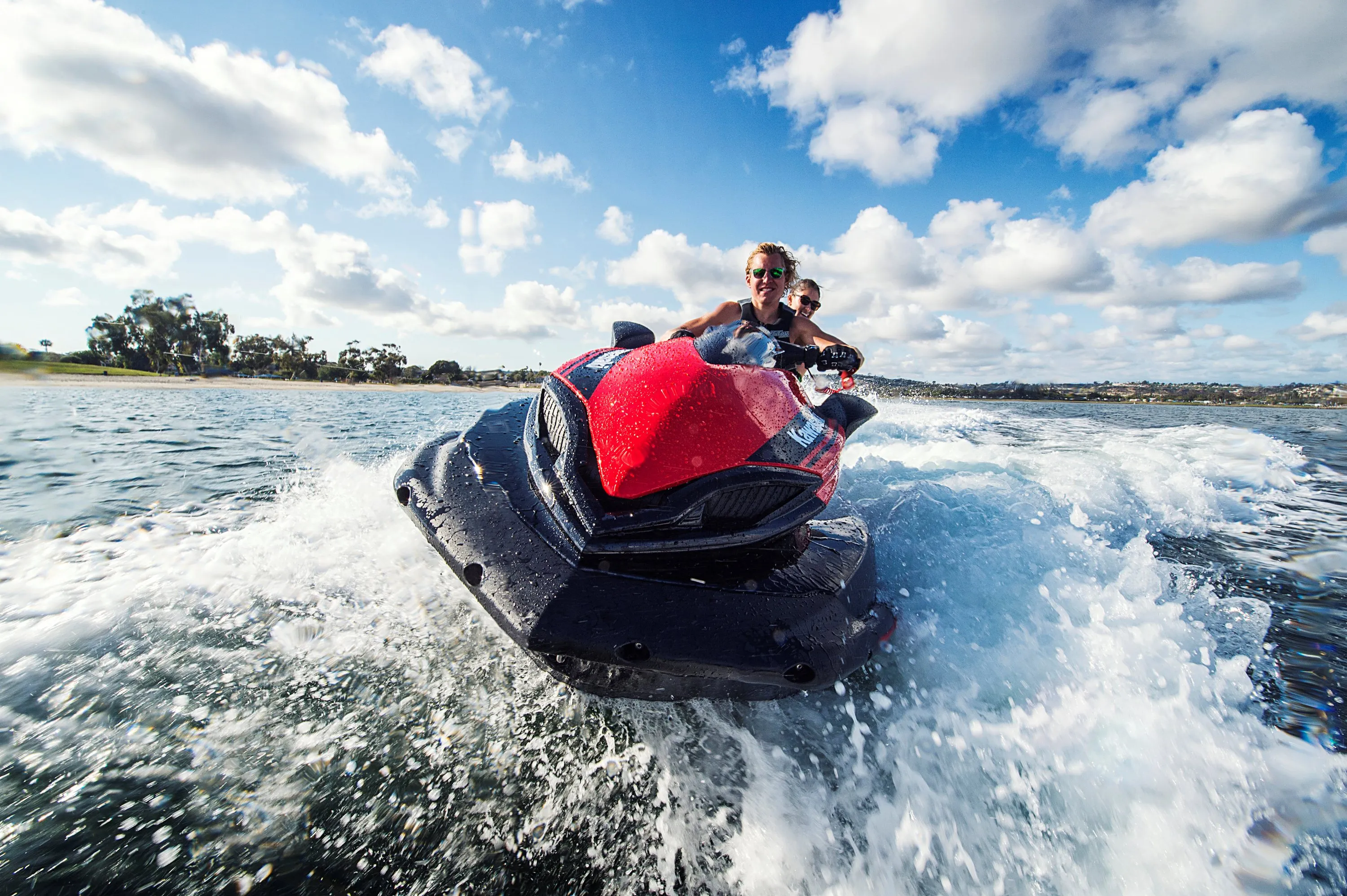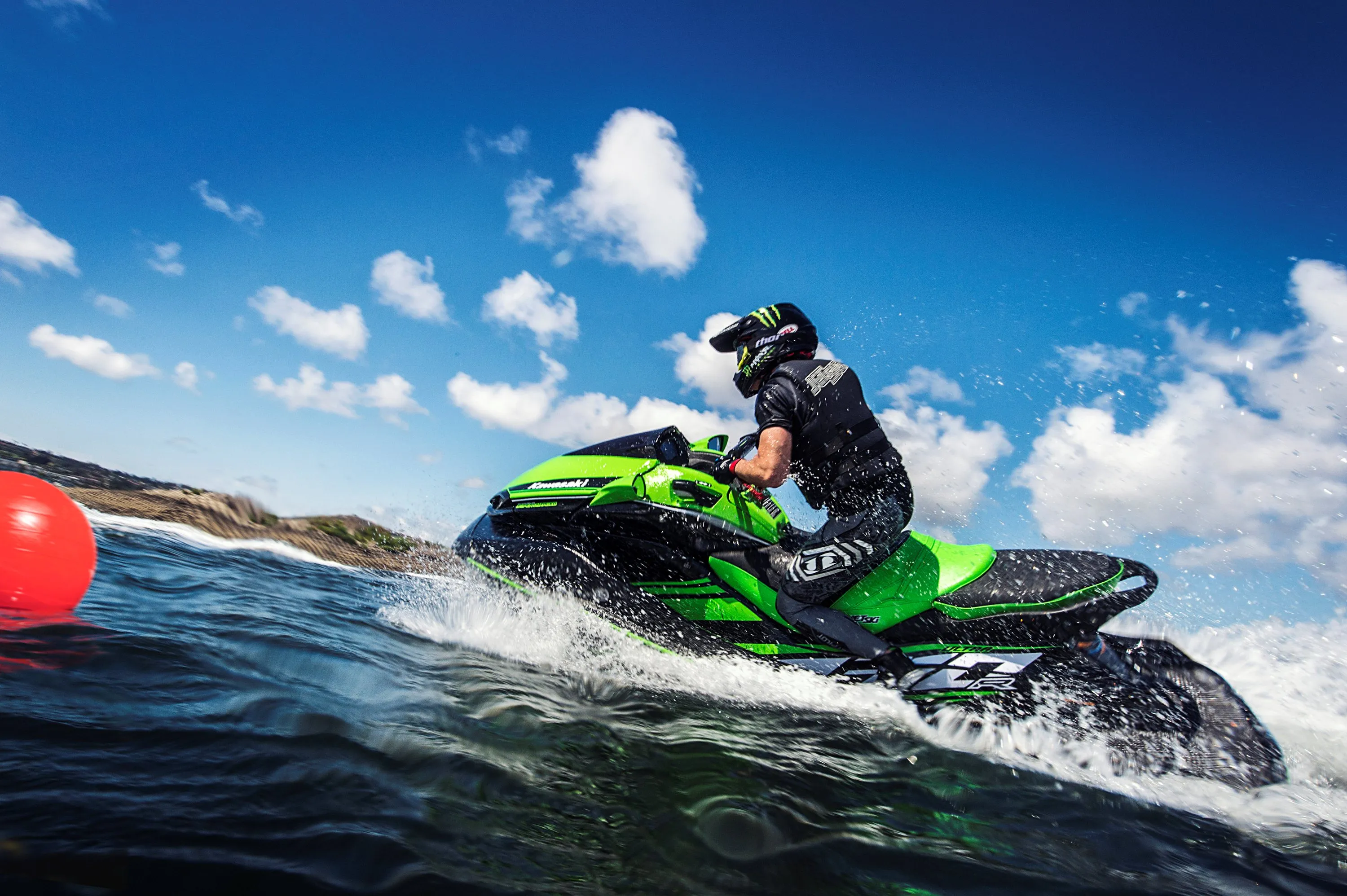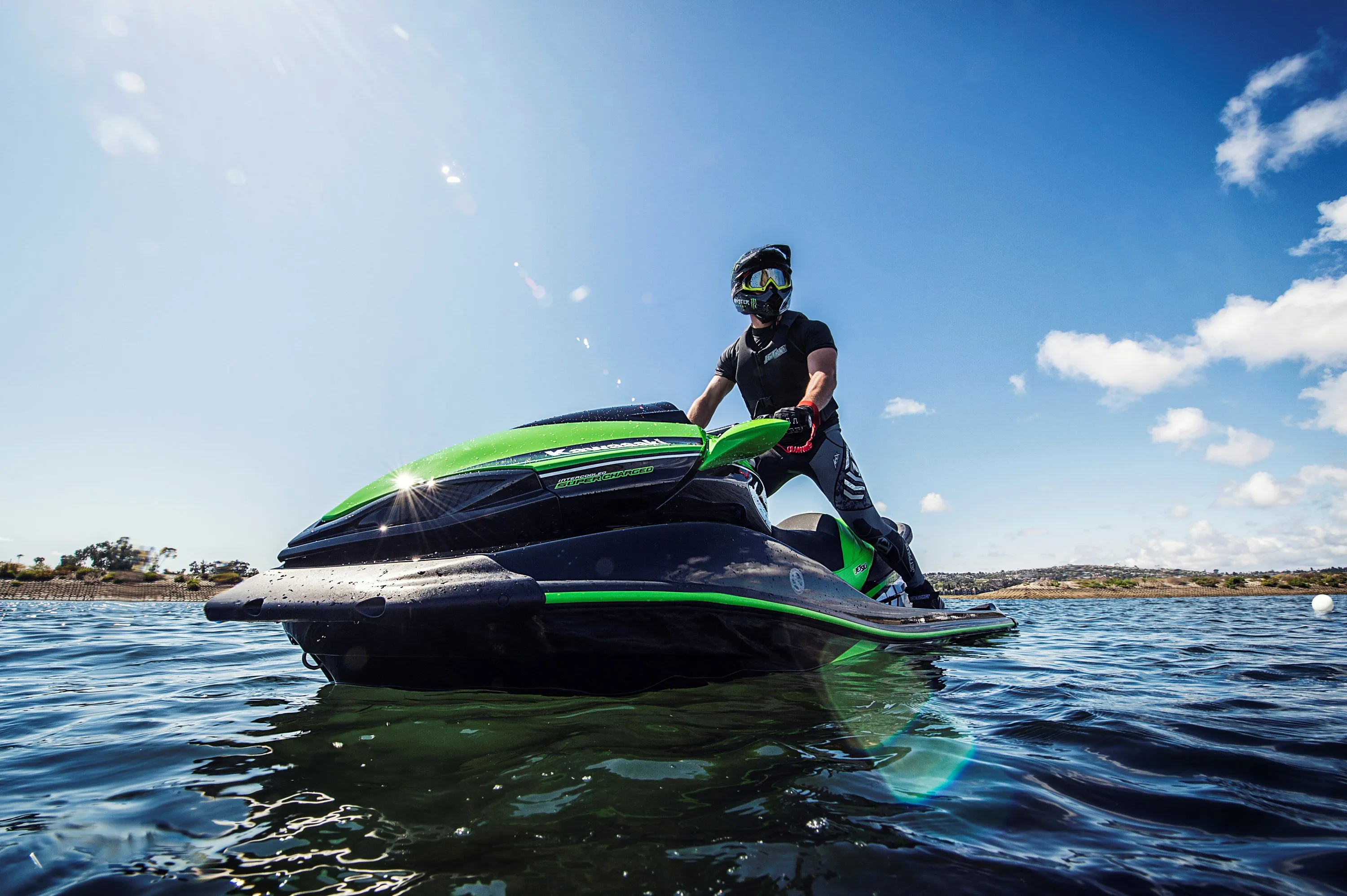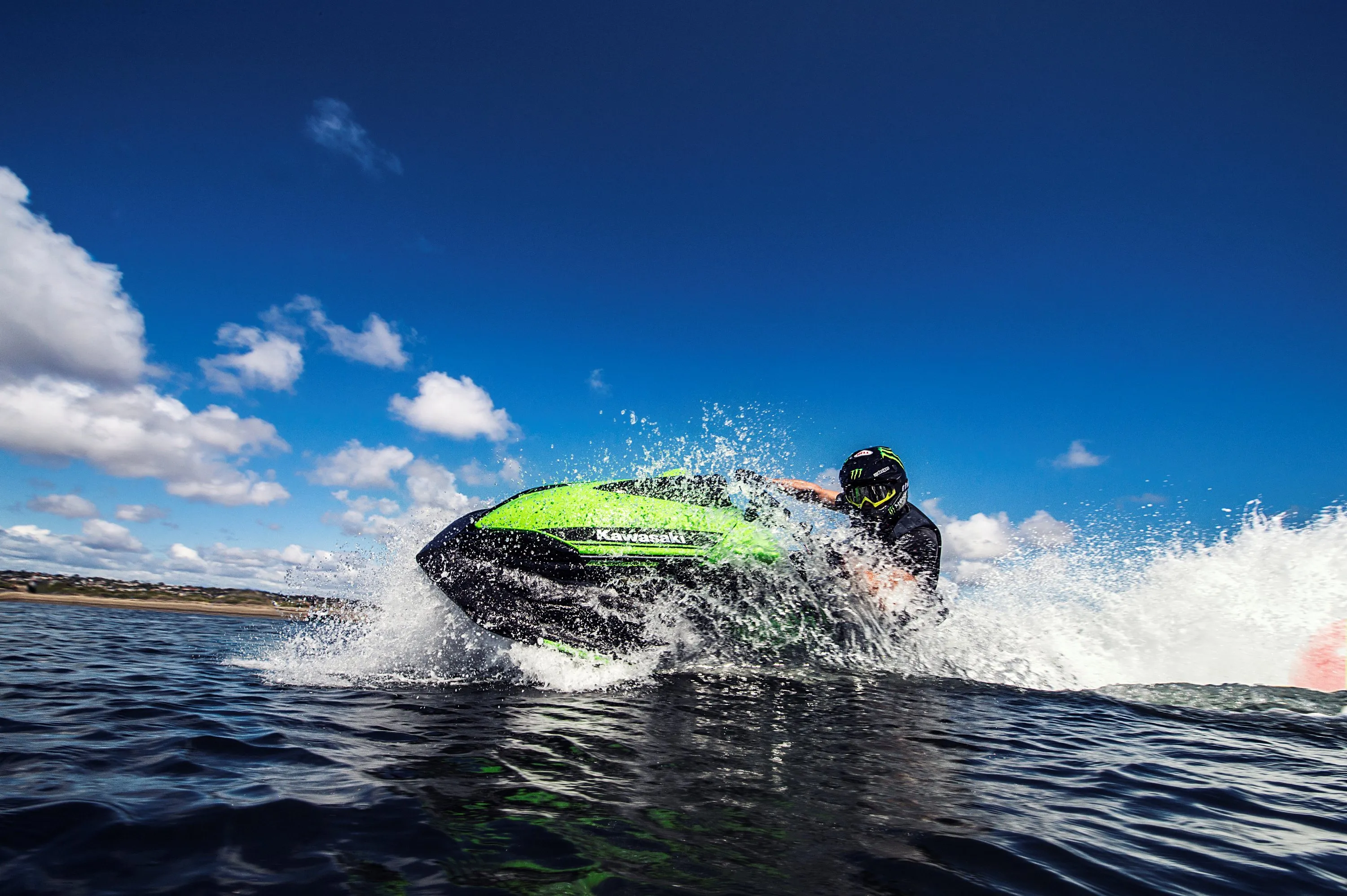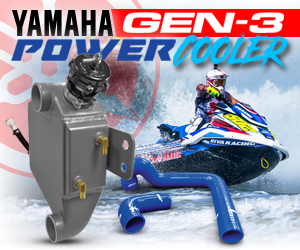We wrestled over publishing this article as nearly all of the information found below has been published (albeit piecemeal) on The Watercraft Journal previously. We were first to show four of the five Ultras back in very early August, revealing a slight rearrangement in colors and decals. Next, we were first in the world to bring a complete and heavily detailed look at the new 2017 Kawasaki SX-R. While there are a few morsels of added information to toss into the mix, you will have gleaned 95-percent of everything you’ll need to know about the new JetSki from October’s article.
Of course, the return of the standup SX-R JetSki is the biggest news for the manufacturer. The nigh 40-year-old machine was retired in 2011 after a strong retail decline in 2009 (spurred by an upside-down economy, failing consumer confidence and a rash of Eco-legislation banned 2-strokes in several left-leaning states) following years of slowly deflating sales. Although shelved, subterranean efforts by project designers Minuro Kanamori and Craig “Fuzzy” Boyd to develop a functioning 4-stroke standup birthed several prototypes, but final approval was out of the question until the tricky landscape could be traversed.
The Watercraft Journal learned first-hand that the decision to resurrect the mothballed project was heavily contested internally, with many factors playing a part – most surprisingly being the reception of the new SX-R by the racing community. IJSBA President Scott Frazier and Pro Watercross’ AJ Handler were both notified early of Kawasaki’s impending release and provided valuable feedback, as well as committing to amend certain rules to permit the new 4-stroke to compete. Even its public reveal was purposely targeted towards the racing audience, drawing back the curtain to a bated crowd at the IJSBA World Finals last month.
The final product and all of its gory details was finally uncovered this past weekend at the annual Kawasaki Dealer Meeting in Palm Springs, California. Priced at one dollar below $10,000 (notably $500 less than our initial intel had confirmed), the SX-R borrows heavily from the brand’s oldest-running model, the STX-15F.
The drivetrain, which has remained almost entirely unchanged since 2005, directly drops into the 551.3-pound (curb weight, 509-pound dry weight) standup – making it significantly heavier than its 370-pound predecessor. The SX-R even shares the same pump and stator, giving the SX-R equal thrust (957-pounds) as the runabout – giving the JetSki near-identical acceleration as the supercharged 310X.
Comparisons in dimensions continue to distinguish the SX-R from its 800 (technically, 781cc) ancestor: the ’17 model totals 104.5-inches long, or 8-feet, 8.5-inches, a full 14-inches longer than before; with between the two is slightly less than a inch and half difference (30.1″ versus 28.7); and the new SX-R stands 3.2-inches taller than before, at 33.1″ over 28.9″.
Although visually identical as two generations of JetSki before it, the handlepole has been reinforced with an internal brace and fitted with a chin pad with Low Fuel and Oil Temp caution lights (not gauges). The throttle is cable-operated (no fly-by-wire), and there’s no electric or mechanical trim control (contrary to some reports published elsewhere).
Again, the engine is Kawasaki’s proven 160-horsepower 1,498cc 4-stroke DOHC four-cylinder, employing the supercharged-Ultra’s composite resin long runner intake manifold. As outlined in our previous article, the oval-edge, stainless steel, three-blade 148mm impeller is also pulled from the STX-15F, and the steering nozzle increased from 76mm diameter to 87mm and a total 102mm nozzle length.
All of this makes the SX-R “the quickest and most agile personal watercraft in Kawasaki’s lineup,” not to mention the fastest factory-built standup JetSki to date with a top speed of 63mph. While pre-orders are being accepted, production is slated for early 2017, putting new units on sales floors somewhere around April.
For the rest of Kawasaki’s lineup, it is, as they say, “BNG” or “Bold New Graphics.” Beginning from the bottom-up, the aforementioned STX-15F remains inexhaustibly unchanged after 14 years – save for its new Ebony/Metallic Graystone livery and all-too-familiar $9,699 price tag. The solitary unit is Kawasaki’s answer to Yamaha’s VX line (consisting of 7 different trim and performance packages), and Sea-Doo’s GTI line, with its 8 different iterations.
Joined with the STX is the base-level Ultra LX, whose Ebony/Valiant Blue is a nice return to the LX’s of the past. Priced at $11,199, the LX is void of electronic throttle control, trim, cruise or Eco modes found on the supercharged models to follow.
The 310-series Ultras retain the same Eaton TVS (Twin Vortices Supercharged) 1.5-liter powerplants ingesting a max boost of 16.8psi. That makes for a thirsty beast, and its 20.6-gallon fuel cell is just enough to keep the 1,498cc creature in its belly satiated. While the Kawasakis have earned the stigma of being “huge,” facts prove otherwise:
Rated with a curb weight of 1047.4-pounds (using the Ultra 310R as the example), the true dry weight is 914-pounds, exactly identical to that of the current RXT-X 300. Additionally, all Ultra 310 models are also 6.5-inches shorter than the RXT/GTX/Wake Pro/RXT-X models (132.7″ versus 139.2), and also 1.2-inches more narrow (47″ versus 48.2″).
Nevertheless, the changes to the four separate 310-horsepower Ultras are minimal. The 310X receives a Ebony/Metallic Stardust White paint scheme with a price tag of $15,299 (identical to the RXP-X 300 MSRP). The next step above the 310X is the limited Ultra 310X SE (Special Edition). Distinguished by a bolstered, two-tone seat and its Ebony/Sunbeam Red coloring, the SE is priced at $15,799 (a full $300 over the aforementioned RXT-X 300, and $200 less than the Yamaha FX SVHO Cruiser).
Above the SE is the “race-ready” Ultra 310R, priced at $16,299 ($200 more than Sea-Doo’s top-of-the-line GTX Limited 300), which comes with a cast aluminum steering neck and electroplated MX-style handlebar, a narrowed grippy seat and green sponsons to match its Ebony/Lime Green livery.
Capping the 2017 lineup is the Ultra 310LX. Marked by Kawasaki’s JetSounds, Kawasaki’s onboard sound system that includes dual 30-watt speakers, amp, and controls implanted into the handlebar pad. In the glove box is a waterproof screw-top container with a USB port for reading a memory stick, and a waterproof bag for a phone or MP3 to supply music; as well as a heat-resistant, bolstered saddle. Again, the 310LX returns in Ebony/Candy Lime Green coloring with an asking price of $17,999 (an even $1,000 over Sea-Doo’s GTX Limited S 260, and $1,1,00 over Yamaha’s heavily-optioned, fully-accessorized FX Limited SVHO).
For some considering themselves market strategists, Kawasaki’s play is a bit befuddling. As competitors double-down on entry-level runabouts, and lightweight muscle craft, the company that started it all is metaphorically bringing the band back together for a reunion tour. Hopefully sales reward the bold strategy as all projections for 2017 look remarkably positive, with building consumer confidence at an all-time high in nearly a decade.



























